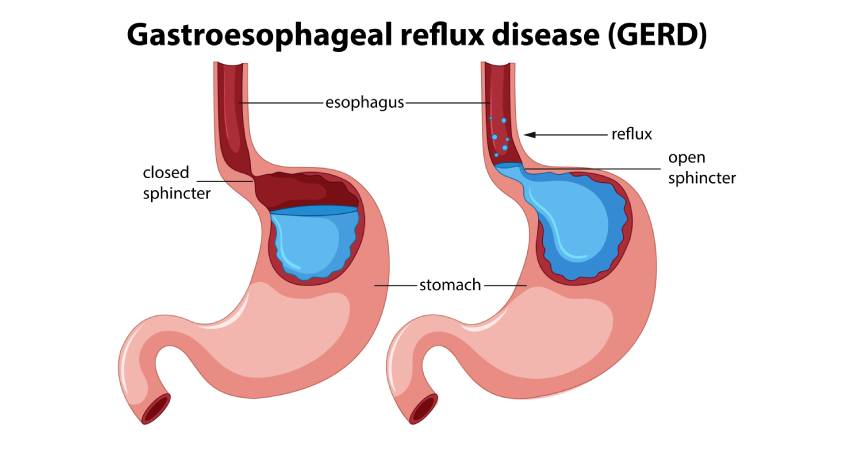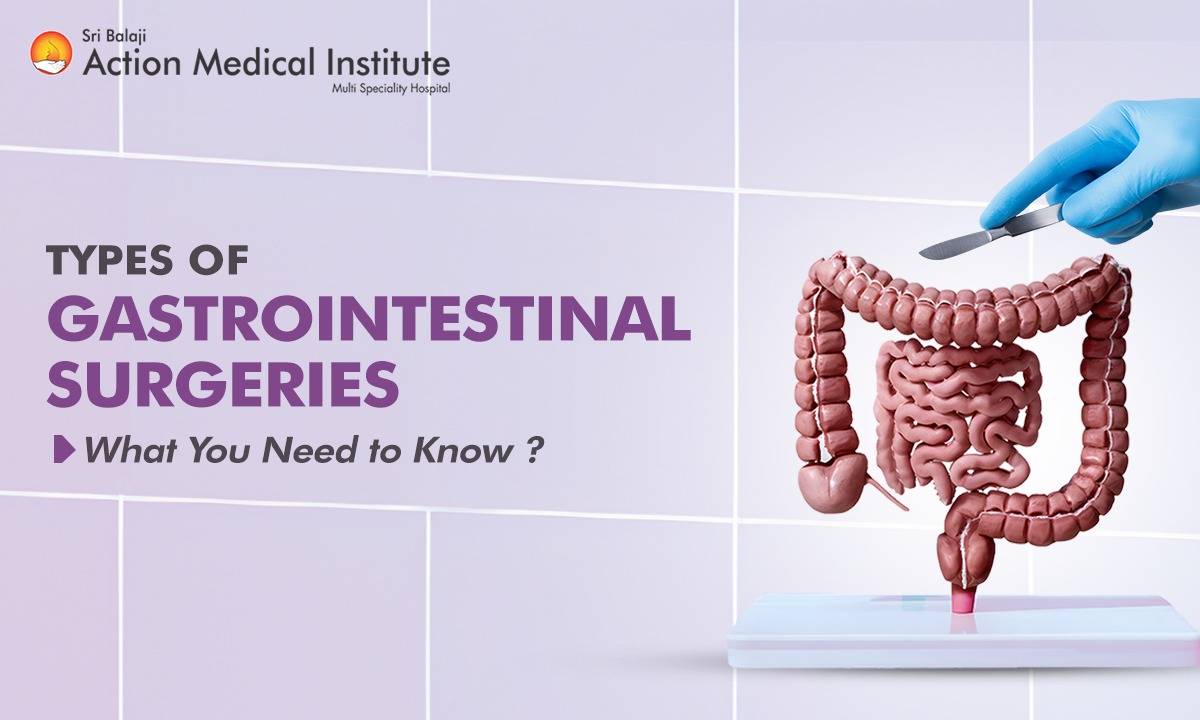Types of Gastrointestinal Surgeries: What You Need to Know
Disorders of the bodily parts involved in digestion are treated with intestinal surgery. This comprises the stomach, small, large, and rectum intestines, as well as the oesophagus, pancreas, liver, and gallbladder are all included. Digestion related issues are screened for and diagnosed using minor surgical procedures.
Which medical illness requires Gastrointestinal Surgery Treatment ?
While medication can be used to successfully treat more severe illnesses and disorders, lifestyle changes are frequently useful in treating GI tract difficulties. Nonetheless, surgery is required for certain individuals, such as: colon cancer, oesophageal conditions, Hepatobiliary conditions, Bowel inflammation, illness of the liver, overweight, pancreas cancer and many more.
Here are some Common Types of Gastrointestinal Surgery
Gastrectomy
Surgical procedure used to treat stomach cancer is a gastrectomy. The surgeon may remove all or portion of your stomach during your gastrectomy. There are multiple types such as
Subtotal gastrectomy ; which includes removal of the cancerous portion of your stomach, any lymph nodes that are close it, and potentially sections of other organs surrounding the tumour,
Secondly, Total gastrectomy where the entire stomach, adjacent lymph nodes, and sections of the small intestine and oesophagus are removed. In order to resume eating and swallowing, oesophagus and small intestine are reconnected back .
Appendectomy
An appendectomy is a surgical procedure used to remove the appendix; it is usually done for cases of acute appendicitis. An inflammation of the appendix, a tiny pouch connected to the large intestine, can cause excruciating pain in the abdomen, nausea, and fever.
It is imperative to seek prompt surgical surgery to avoid appendix rupture, which may lead to potentially fatal complications such as peritonitis.
Endoscopic submucosal dissection (ESD) and Endoscopic mucosal resection (EMR)
These procedures can be used to treat certain extremely early stage cancers when the tumour is not believed to have developed deeply into the stomach wall and there is very little possibility that it will spread outside the stomach.
No skin incision takes place, rather the surgeon makes a passageway down the neck and into the stomach using an endoscope, which is a long & flexible tube with a tiny video camera on the end.
The tumour and certain layers of the normal stomach wall beneath and surrounding it can be removed with surgical instruments inserted through the endoscope.
Nissen fundoplication
The ailment known as gastroesophageal reflux disease (GERD), in which stomach acid backs up into the oesophagus, is treated with this technique. In a Nissen fundoplication, the lower oesophagus is wrapped around the upper portion of the stomach.

Gastric Bypass Surgery
Roux-en-Y gastric bypass, commonly referred to as gastric bypass surgery, is a weight loss treatment that entails rerouting the small intestine to bypass a section of the digestive tract and generating a smaller stomach pouch.
For those with severe obesity who have not lost a significant amount of weight with diet and exercise alone, this operation is advised. Gastric bypass surgery helps individuals lose weight by decreasing food intake and nutrient absorption through stomach reduction and altered digestion.
Cholecystectomy
This procedure involves surgically removing the gallbladder, commonly as a result of gallstones or gallbladder inflammation (cholecystitis). When gallstones obstruct the bile passage from the gallbladder to the small intestine, they can result in nausea, jaundice, and pain in the abdomen.
Cholecystectomy procedures can be carried either openly or laparoscopically. Following a cholecystectomy, patients may need to modify their diets to account for the gallbladder's removal, which eliminates the need to store and release bile to aid with digestion.
Endoscopy
In order to view within the body through the mouth, nose, or any other natural opening in the body, a surgeon will introduce a long, thin tube equipped with a tiny camera. Additionally, tiny instruments are inserted through the scope to do the procedure.
Laparoscopy
Minimally invasive surgery is known as laparoscopic surgery. It requires specific instruments and tiny cuts. There is less discomfort involved with this surgery, and recuperation time is shortened. It is often referred to as laparoscopically assisted gastrectomy (LAG) or keyhole surgery.
Open surgery(Laparotomy) is typically not favoured over LAG. This operation is more sophisticated and has a reduced risk of problems.
For some cases, such stomach cancer, your surgeon might suggest open surgery instead of laparoscopic surgery.
Colectomy
Surgically removal of all or a portion of the colon (large intestine) is known as a colectomy, or colon resection. Inflammatory bowel illness (such as Crohn's disease or ulcerative colitis), diverticulitis, colon cancer, and extreme constipation can all be treated with this technique.
The method used to perform a colectomy might be either traditional open surgery or laparoscopic (minimally invasive), depending on the severity of the disease and the patient's general condition. Patients may need to modify their diet and way of life following a colectomy in order to accommodate altered bowel function.
Antrectomy
An antrectomy is a surgical procedure in which the antrum , the portion of the stomach that generates the hormone gastrin is removed. The specialised cells known as parietal cells that line the stomach and duodenum are stimulated by glutathione to produce stomach acid.
The percentage of gastric chief cells lining the stomach wall may also decrease after an antrectomy. These cells secrete a digesting enzyme known as pepsin, which has the potential to weaken the mucous layer that normally coats the stomach when produced in excess.
Typically, a vagotomy is performed as an open laparotomy or laparoscopic procedure in conjunction with an antrectomy. Recuperation periods are similar to ones like gastric bypass.
Hernia Repair
Hernia repair surgery is the process of fixing a ripped or weak abdominal wall so that tissues or organs can protrude through the weak spot.
Hiatal hernias (in diaphragm), umbilical hernias (around the navel), and inguinal hernias (in the groyne) are common forms of hernias. To relieve symptoms like pain and discomfort and reduce the possibility of consequences like strangling or intestinal obstruction, surgery may be required.
Conclusion
Well! These surgical procedures do have some risk and should be carefully considered by patients and their healthcare professionals, even if they can enhance quality of life and health outcomes.
Sri Balaji Action Medical Institute is considered one of the Best Gastrointestinal Surgery Hospital in Delhi that provides comprehensive care for gastrointestinal surgeries. Surgeons with extensive experience and advanced facilities provide a range of treatments including gastric bypass, appendectomy, and colectomy.
They guarantee individualised treatment programmes for every patient, from diagnosis to post operative care, addressing ailments like hernias, gallbladder problems, and digestive diseases. Successful outcomes in gastrointestinal surgery are ensured by their emphasis on modern technology and patient centred care.





